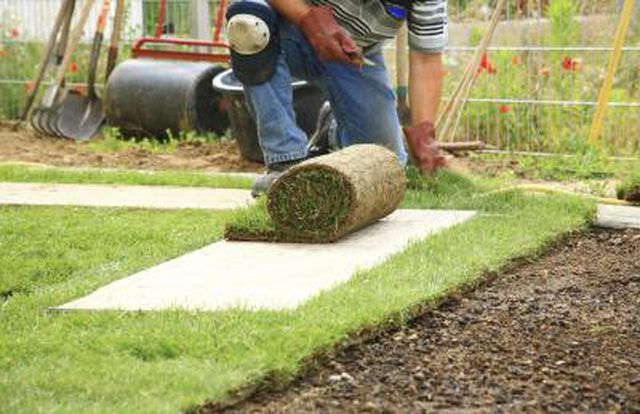Bulbs
Flower Basics
Flower Beds & Specialty Gardens
Flower Garden
Garden Furniture
Garden Gnomes
Garden Seeds
Garden Sheds
Garden Statues
Garden Tools & Supplies
Gardening Basics
Green & Organic
Groundcovers & Vines
Growing Annuals
Growing Basil
Growing Beans
Growing Berries
Growing Blueberries
Growing Cactus
Growing Corn
Growing Cotton
Growing Edibles
Growing Flowers
Growing Garlic
Growing Grapes
Growing Grass
Growing Herbs
Growing Jasmine
Growing Mint
Growing Mushrooms
Orchids
Growing Peanuts
Growing Perennials
Growing Plants
Growing Rosemary
Growing Roses
Growing Strawberries
Growing Sunflowers
Growing Thyme
Growing Tomatoes
Growing Tulips
Growing Vegetables
Herb Basics
Herb Garden
Indoor Growing
Landscaping Basics
Landscaping Patios
Landscaping Plants
Landscaping Shrubs
Landscaping Trees
Landscaping Walks & Pathways
Lawn Basics
Lawn Maintenance
Lawn Mowers
Lawn Ornaments
Lawn Planting
Lawn Tools
Outdoor Growing
Overall Landscape Planning
Pests, Weeds & Problems
Plant Basics
Rock Garden
Rose Garden
Shrubs
Soil
Specialty Gardens
Trees
Vegetable Garden
Yard Maintenance
How to Care for New Fescue Sod
How to Care for New Fescue Sod. Fescues (Festuca spp.) are perennial grasses suited for U.S. Department of Agriculture plant hardiness zones 3 through 9. Fescue sod does best laid in early spring or mid-fall, when these cool-season grasses are actively growing. Fescue sods vary slightly depending on the variety used. Creeping red fescue (Festuca...

Fescues (Festuca spp.) are perennial grasses suited for U.S. Department of Agriculture plant hardiness zones 3 through 9. Fescue sod does best laid in early spring or mid-fall, when these cool-season grasses are actively growing. Fescue sods vary slightly depending on the variety used. Creeping red fescue (Festuca rubra ), hardy in USDA zones 3 through 7, is a spreading grass that forms densely rooted sod. Non-spreading tall fescue (Festuca arundinacea), hardy in USDA zones 4 through 7, roots differently because of its clumping growth. Given proper care, well-maintained fescue sod will thrive.
Things You'll Need
Water
Lawn mower
Soil test
High-nitrogen turf fertilizer
Irrigate new fescue sod as soon as you finish sodding. Keep the top 1 to 2 inches constantly moist. Depending on your climate and the time of year, this may mean watering several times each day. Don't allow sod to dry out until it roots well. This can take up to three weeks, depending on your sod and your weather. Avoid walking on newly sodded fescue.
Increase intervals between irrigation once fescue sod roots. Encourage deep root growth with less frequent, heavier irrigation. Water in the mornings to reduce evaporation and allow fescue to dry well before evening. Irrigate active, rooted fescue to a 4- to 6-inch depth each week. This requires 1 to 1 1/2 inches of water per week, or 630 to 945 gallons per 1,000 square feet.
Mow new fescue sod when the grass reaches a height one and a third times the height you want it kept. If your intended height is 2 inches, make your first mowing when fescue reaches 2 2/3 inches tall. Never remove more than one-fourth to one-third of the fescue's height in a single mowing. Let the short cuttings lie to provide additional nutrients. Keep mower blades sharp; fescue tears easily.
Mow sodded areas diligently to keep new fescue at your desired height. Mow when the grass is dry, never when it's wet. Fine fescues, such as creeping red fescue, do well when kept at 1 1/2 to 2 1/2 inches tall. Tall fescue prefers 2- to 3-inch heights. During drought or temperature extremes -- high or low -- raise your mowing height. Take the extra height off gradually when normal conditions return.
Fertilize well-rooted fescue sod in early spring and autumn during its periods of active, cool-season growth. A soil test confirms the amount of fertilizer needed, as well as any need for pH-adjusting soil amendments. Fescues generally require 1/2 to 1 pound of actual nitrogen per 1,000 square feet, per twice-yearly application. Never fertilize fescue sod during the summer months. Summer fertilizing stresses fescue roots and encourages turf disease.
Tips & Warnings
Most tall fescue sod comes grown on plastic netting designed to hold its roots together when cut for sod. Other cool-season grasses are usually included with the tall fescue. The netting is intended to stay in the sod and in your lawn.
Make sure your sod is laid just the way you want it from its first day on the ground. Rearranging sod pieces after the first one to two days -- even slightly -- can delay sod roots from taking hold.